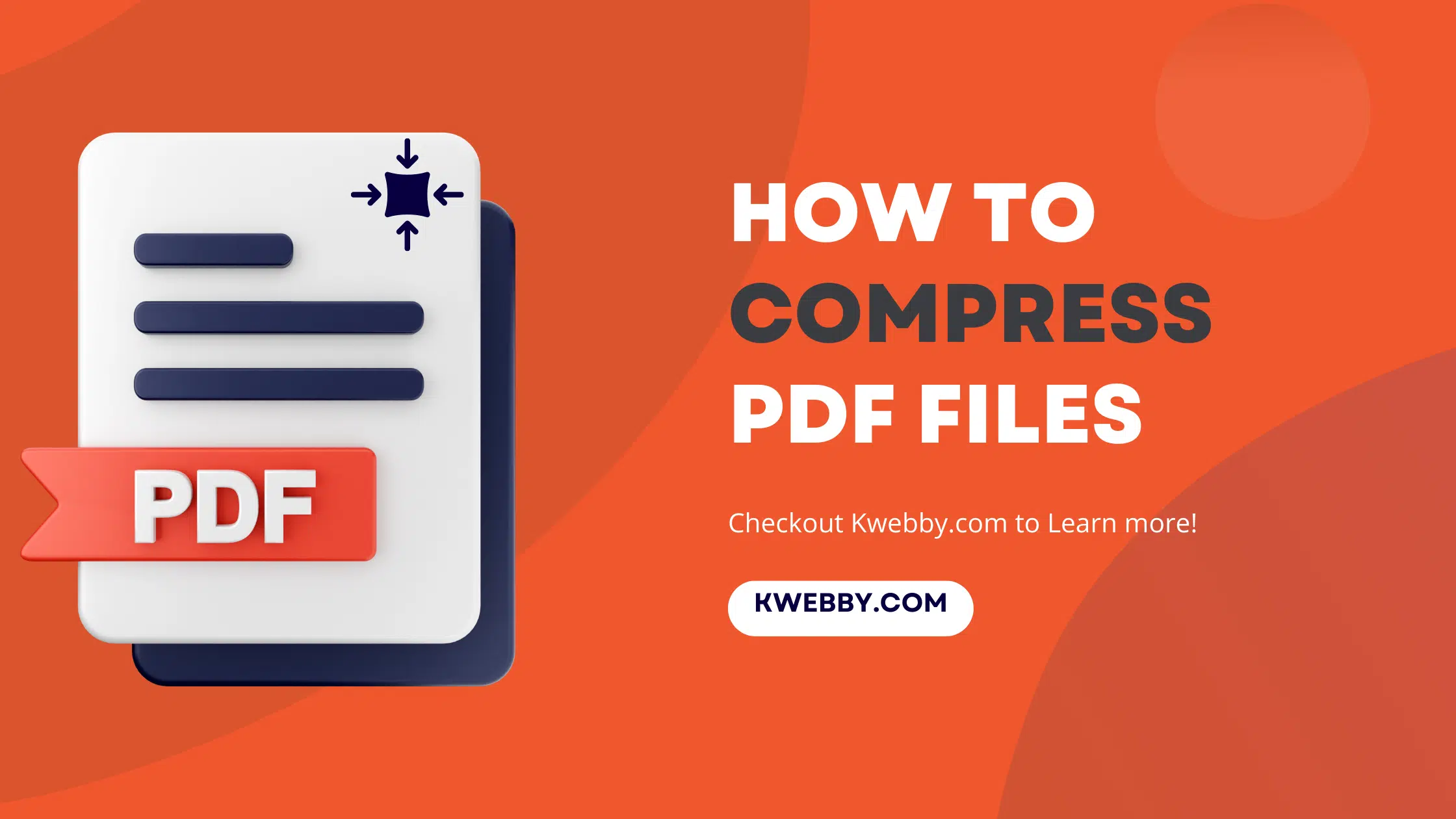
How to Compress PDF Files (4 Easy Methods)
Choose Your Language:
Compressing PDF files is an essential task for managing digital documents efficiently, whether you’re looking to save storage space or make file sharing easier. With tools like Kwebby’s PDF Compressor, you can quickly reduce file sizes without compromising quality. This guide will walk you through using Kwebby’s tool and explore other effective options for compressing PDF files seamlessly.
Method #1 Use Kwebby’s PDF Compression Tool Online
Compressing a PDF online is a straightforward and efficient way to reduce file size while maintaining the integrity of your document.
This method is particularly appealing for those who require quick results without installing additional software. Below is a simple guide to using Kwebby’s Compress PDF feature:
Visit the Kwebby PDF Compression Tool
Navigate to Kwebby’s website and locate the PDF compression tool to get started.
Upload Your PDF File
Drag and drop your PDF document into the designated area, or click the upload button to select it from your device. Large PDF files are handled effectively using this process.
Initiate Compression
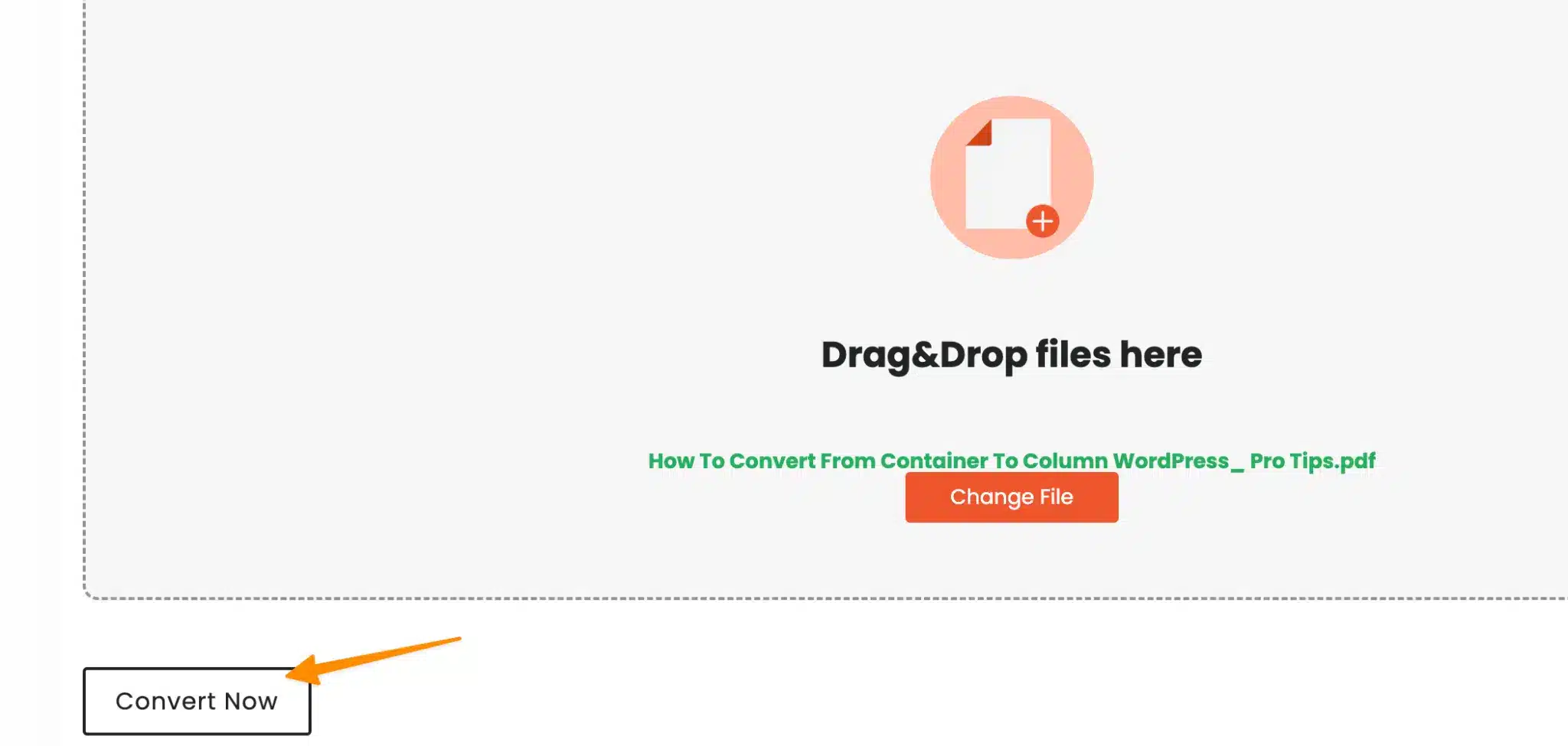
Click the “Convert” button to activate Kwebby’s advanced compression process. The tool reduces the PDF file size while ensuring the original quality of images and text is preserved.
Download the Optimized File
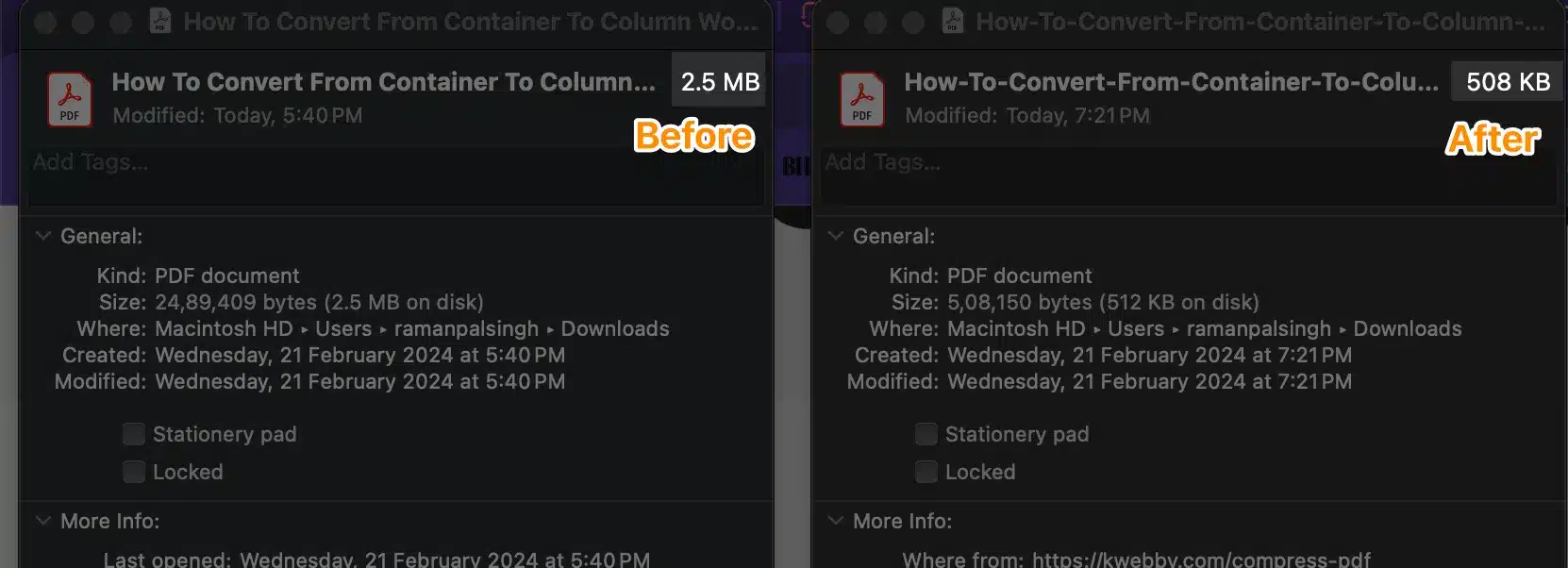
Once the compression is complete, download the smaller PDF file directly to your device or save it to a cloud storage service like Google Drive for easy sharing.
By using an online Kwebby compress PDF online tool, you can quickly reduce the file size of your documents, making them more manageable for e-mail or other sharing platforms.
Whether you’re dealing with text-heavy PDFs or documents with images, the compression process ensures your PDFs remain accessible and secure. Optimize your PDF file sizes today with Kwebby for a seamless and user-friendly experience.
Method #2 Using Free Adobe Acrobat Online
Adobe Acrobat Online provides a simple and efficient way to compress PDF files while maintaining their quality. Follow these steps to reduce your file size with ease:
Navigate to Acrobat Online Services
Visit Adobe’s Compress PDF page to access the suite of tools available for managing your PDF files efficiently.
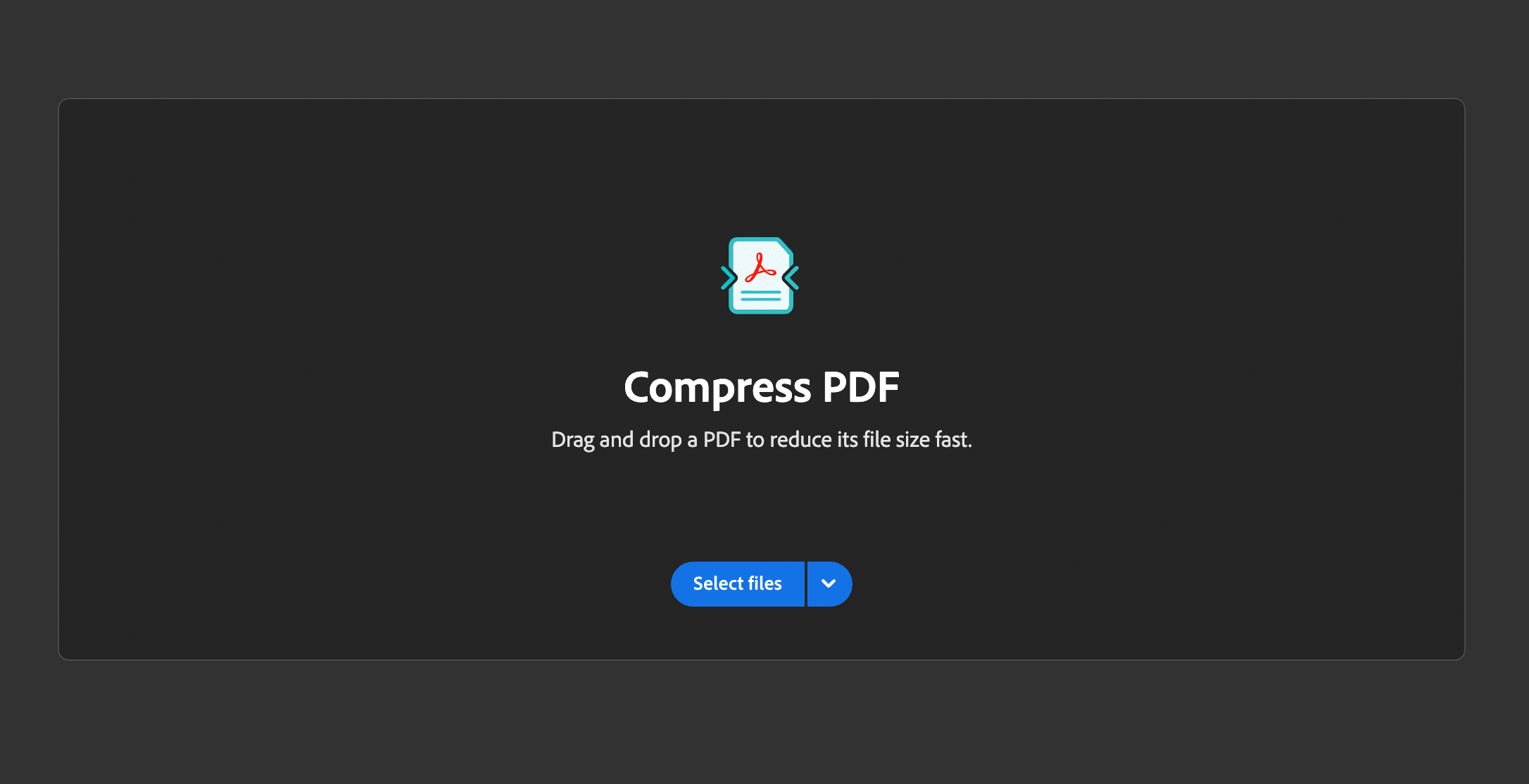
Select Your File
Click on the “Select a file” button and choose the document you want to compress. You can upload a file directly from your device or connect to cloud storage services like Google Drive to select your document.
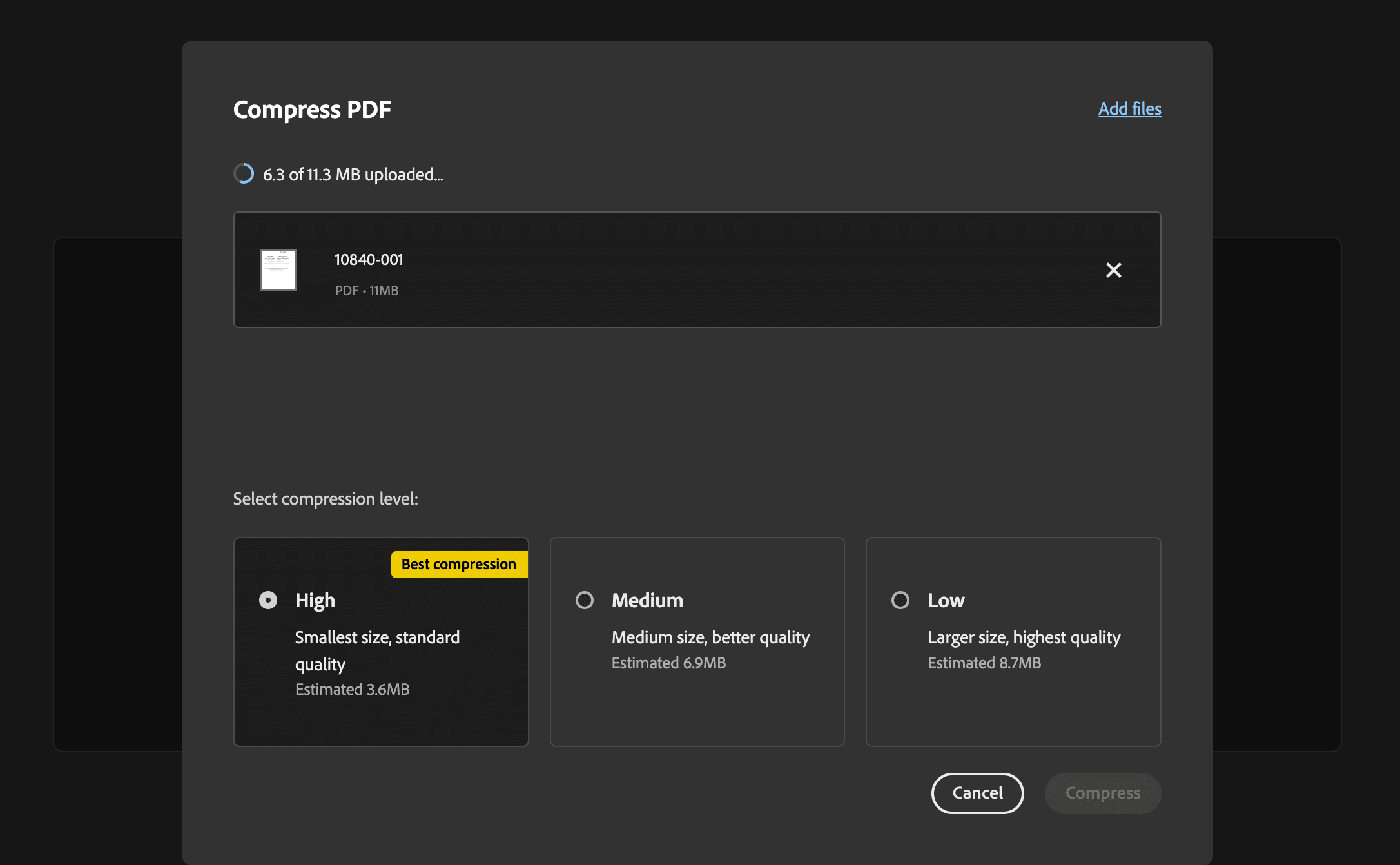
Upload and Compress
Once you’ve selected your file (up to 2GB in size), Acrobat’s advanced algorithms will process the data.
You can even select the compression level;
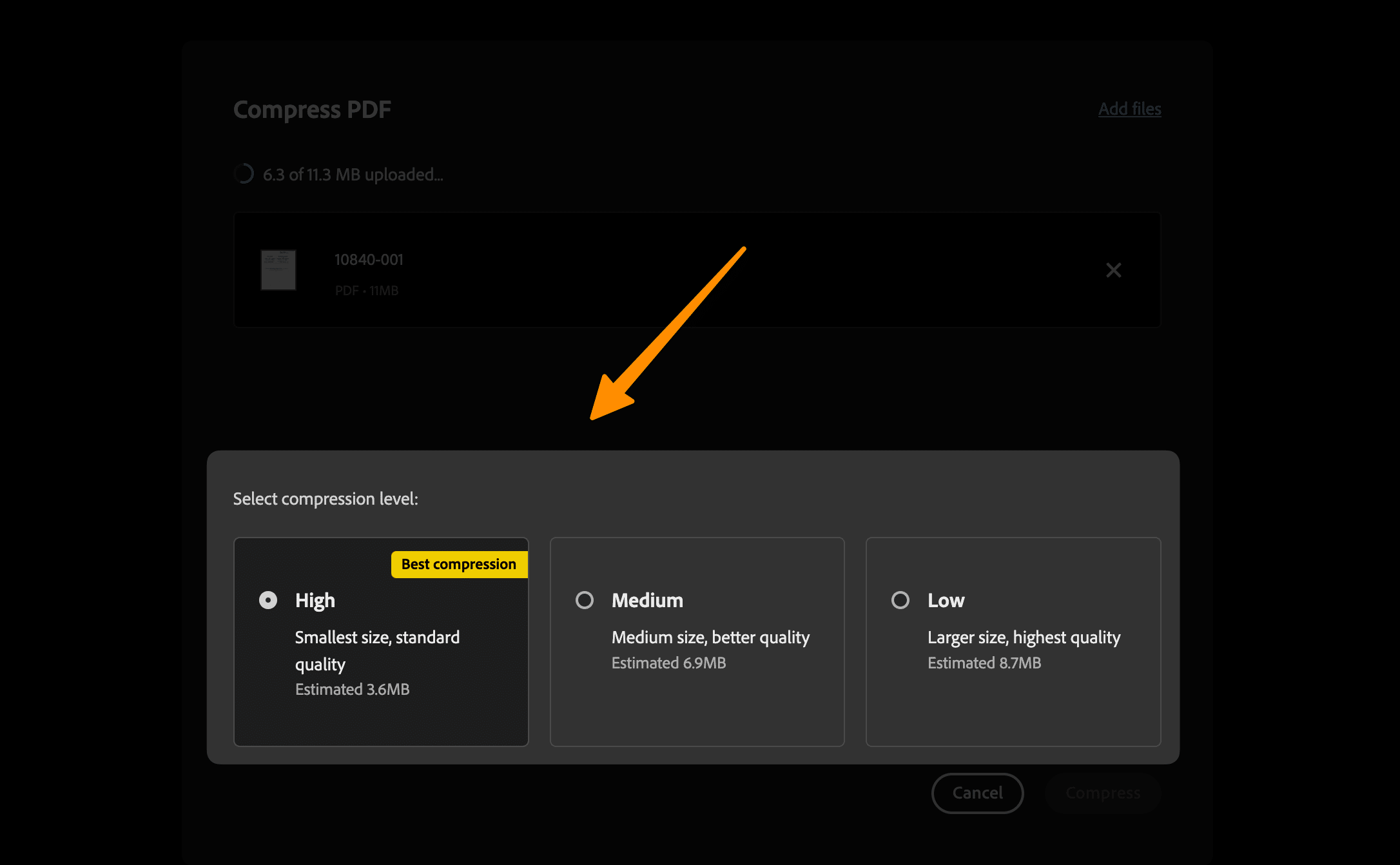
The tool ensures your document is compressed effectively while maintaining its original fidelity.
Retain or Share the Optimized File
After the compression process is complete, download the reduced file directly to your device. Alternatively, you can sign in to share the optimized document effortlessly with colleagues or stakeholders.
With its intuitive interface and reliable functionality, Adobe Acrobat Online ensures a seamless experience regardless of the device or platform you use. Compressing your PDF files reduces digital clutter and allows for easier handling and sharing of your documents.
Method #3 Using Mac Preview App
Mac users seeking an inbuilt solution for compressing PDFs can turn to the Preview application, a versatile tool pre-installed in macOS. With its user-friendly interface, Preview allows for not only viewing but also efficient downsizing of PDF documents without the need for any additional downloads or internet access. Follow these simple steps to compress a PDF file effectively:
Open the PDF with Preview
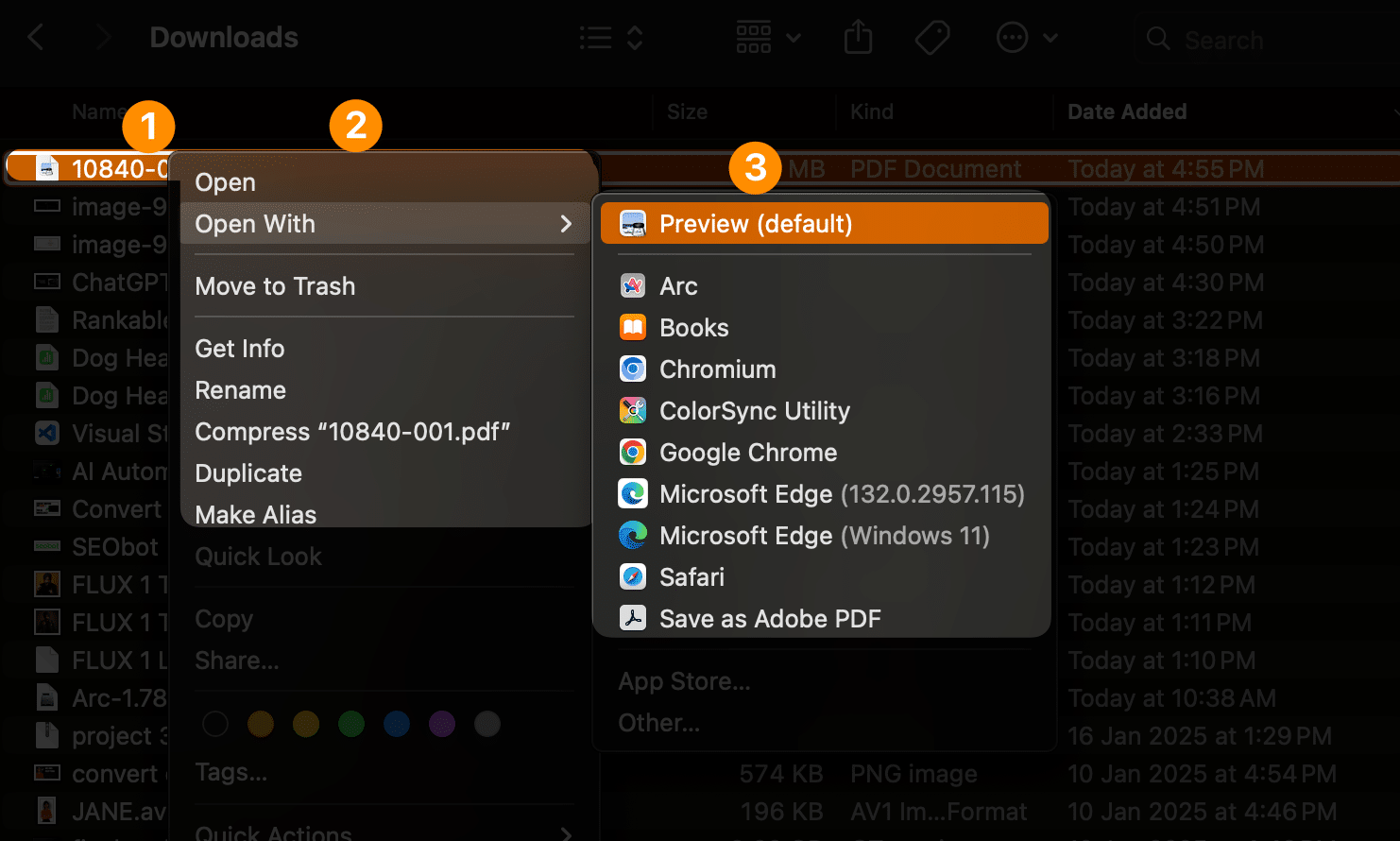
Locate the PDF file you want to compress. Right-click on the PDF file, select “Open with,” and then choose “Preview” from the dropdown menu.
Export as a Compressed PDF
Once the file is open in Preview, click on the “File” button in the top menu bar. From the dropdown menu, select the “Export as PDF…” option.
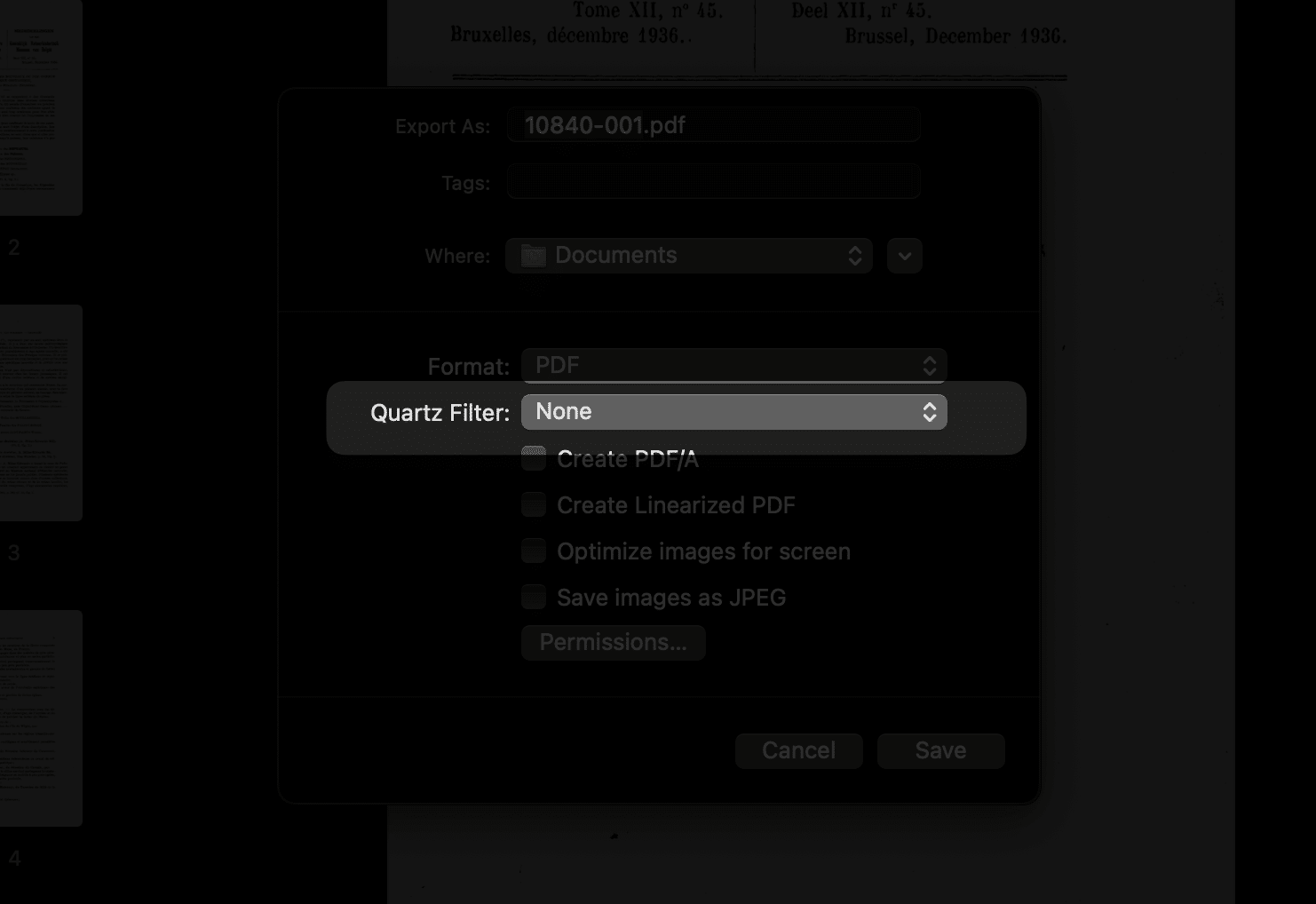
Compress the PDF File
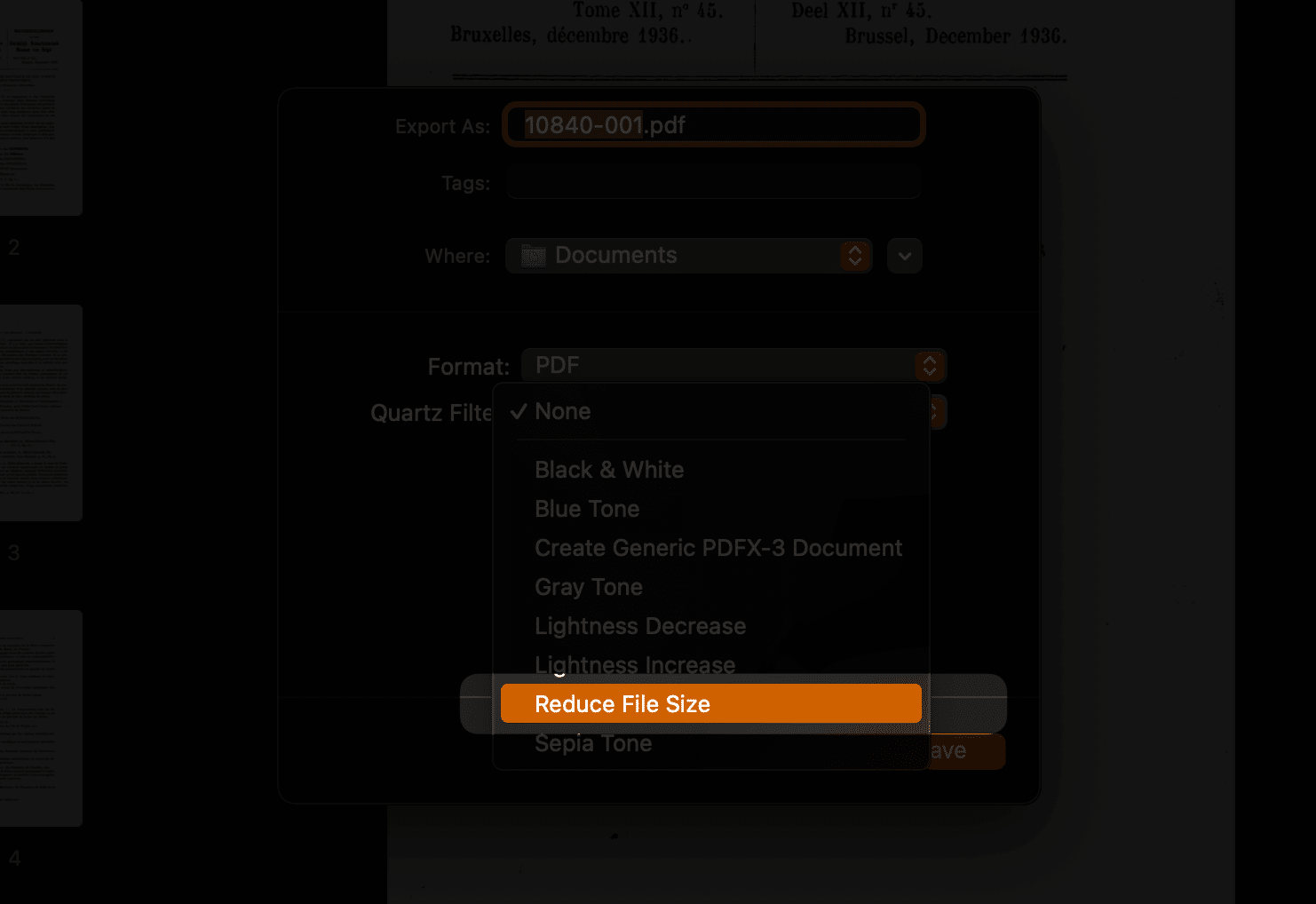
In the export dialog box that appears, locate the “Quartz Filter” dropdown menu. Choose “Reduce File Size” as the preset compress option.
Make sure the desired compression level aligns with your needs, such as maintaining medium quality while reducing file size. Finally, click the “Save” button to complete the compression process.
Preview provides a seamless way to optimize your pdf file size, allowing you to handle larger pdf files or several pdfs with ease.
This method ensures your compressed pdf retains compatibility across other file formats while being smaller in size for easy sharing via e-mail or cloud storage platforms like Google Drive.
Since the tool is built into macOS, file compression is handled securely without requiring an internet connection or additional software downloads.
Method #4 – Using Microsoft Word
Using Microsoft Word, you can easily compress a PDF file without needing additional software. This method allows you to optimize the file size of your PDF documents for sharing or storing while maintaining quality and compatibility with other file formats. Follow these steps to compress a PDF using Microsoft Word:
Open a document in Microsoft Word.
Start by opening the document you want to convert into a compressed PDF file. You can use either an existing Word file or open a PDF document directly in Word, though some formatting may not remain intact if you choose the latter.
Click the File menu.
Navigate to the top-left corner of the window and click on “File” to access additional options.
Click Export (PC) or Save As (Mac).
If you’re using a PC, choose the “Export” option. On a Mac, click “Save As” to proceed with converting and compressing the PDF file.
Click Create PDF/XPS (PC only).
For Windows users, find and click the “Create PDF/XPS” button on the right-hand side of the panel. This prepares the document for export as a PDF.
Select PDF as the File Format or Save As type.
On a Mac, you’ll see “PDF” as an option near the bottom of the window. On a PC, the default “Save As type” should already be set to PDF.
Select an optimization option.
To compress the PDF, look for optimization options at the bottom of the save window. On a PC, select “Minimum size.” On a Mac, choose “Best for electronic distribution and accessibility.” These options reduce the file size while retaining sufficient quality for digital distribution.
Name the PDF and select a folder.
Choose a name and save location for the compressed file. If you wish to overwrite an existing PDF, keep the same name and directory. Otherwise, rename and pick a different folder.
Click Publish (PC) or Export (Mac).
Save the compressed PDF by clicking “Publish” on a PC or “Export” on a Mac. The file will now be saved at the selected location with a smaller file size.
Using Microsoft Word as a PDF compressor is a simple and secure method to reduce the size of large PDF files.
This compression process allows for easy sharing via email or uploading to cloud storage platforms like Google Drive. It ensures compatibility with other file formats and retains good image quality without losing essential content. Plus, no internet connection or additional online tools are needed, making it efficient and user-friendly for both Windows and macOS users.
Frequently Asked Questions (FAQs)
How can I compress multiple PDF files at once?
To compress several PDFs together, you can use batch compression tools available in software like Adobe Acrobat Pro or online PDF compressors. These tools allow you to drop files, adjust the compression level, and process them simultaneously, saving time and ensuring a smaller file size for each document.
Does compressing a PDF reduce its image quality?
The compression process often reduces the image quality slightly, depending on the compression method and level chosen. However, many tools, such as Adobe Acrobat and other online PDF compression tools, offer a medium quality or preset compress option to balance file size and content clarity without losing essential quality.
Is it possible to compress a PDF file online without installing any software?
Yes, you can compress a PDF file online using tools like online PDF compressors. These platforms allow you to upload your file, select your preferred compression setting, and click download to save a smaller size version of your document. It’s a quick and user-friendly solution for reducing PDF file size without needing additional software.
Final Thoughts!
Compressing a PDF file is easier than ever with the many tools and software available. Whether you need to reduce file size for sharing, optimize for cloud storage, or meet email size limits, a reliable PDF compression tool can help. Tools like Adobe Acrobat or online compressors let you upload large PDFs, choose a compression level, and download a smaller file with minimal quality loss. These tools efficiently shrink files without affecting essential content, offering a quick and secure solution. With options to drop files, select methods, and handle multiple PDFs, they balance file size and quality. Compatible with Windows, Mac, and cloud services like Google Drive, PDF compression is a versatile way to create optimized files for any platform.
Test your knowledge
Take a quick 5-question quiz based on this page.




